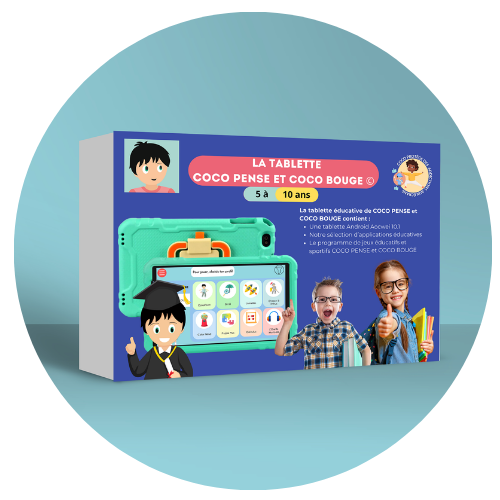As we delve into the complexities of Attention Deficit Hyperactivity Disorder (ADHD), it becomes clear that this condition is not merely a label but a multifaceted challenge that affects many children in our classrooms. ADHD is characterized by symptoms such as inattention, hyperactivity, and impulsivity, which can significantly impact a child’s ability to learn and interact with peers. It is essential for us to recognize that ADHD manifests differently in each individual, leading to a spectrum of behaviors and challenges.
Understanding these nuances allows us to approach our students with empathy and tailored strategies that cater to their unique needs. Moreover, ADHD is often accompanied by coexisting conditions such as anxiety, depression, or learning disabilities, which can further complicate the educational experience for affected children. As we strive to create an inclusive environment, we must educate ourselves about the various ways ADHD can influence a child’s behavior and learning style.
By fostering a deeper understanding of ADHD, we can better support our students in navigating their educational journeys, ensuring they feel valued and understood within our classrooms.
Recognizing ADHD in the Classroom
Identifying Patterns of Behavior
By being vigilant and attentive to the patterns of behavior exhibited by our students, we can identify those who may be struggling with ADHD and initiate conversations with parents and specialists to explore further assessments. In addition to behavioral signs, we should also consider the academic performance of our students.
Academic Performance and ADHD
Children with ADHD may excel in certain areas while facing challenges in others, leading to inconsistent grades and fluctuating motivation levels. This inconsistency can be a key indicator of ADHD, and by recognizing it, we can provide targeted support to help our students overcome their challenges.
Creating a Supportive Atmosphere
As we work to recognize these patterns, we can create a more supportive atmosphere that encourages open communication and collaboration among educators, parents, and specialists. By acknowledging the signs of ADHD early on, we can implement strategies that help our students thrive academically and socially.
Creating an Inclusive and Supportive Classroom Environment

To ensure the successful implementation of differentiated instruction and address the diverse needs of students, ongoing professional development (PD) for educators is a crucial element. Educators must continually update their skills and knowledge to effectively cater to various learning styles and abilities in the classroom. Through PD opportunities, we can refine our approaches, learn new strategies, and better meet the needs of all students.
1. Engaging in Professional Development Workshops
Professional development workshops offer educators the chance to deepen their understanding of differentiated instruction and other key teaching methodologies. These workshops can focus on a variety of topics, including the latest research, new technology tools, and effective differentiation strategies.
- Interactive Learning: Workshops that encourage hands-on experiences, such as using apps like COCO THINKS and COCO MOVES, provide practical, real-world applications of theory. Educators can learn how to use these tools to enhance student engagement and support individualized learning in their classrooms.
- Collaborative Learning: Educators can benefit from collaborating with colleagues during workshops. Sharing ideas, challenges, and successes helps teachers build a community of practice that supports one another in their professional growth.
2. Peer Observations and Collaborative Planning
Peer observations and collaborative planning sessions offer opportunities for teachers to learn from one another and see how different strategies are applied in real classrooms. Through observing colleagues, teachers can witness effective differentiation techniques in action, especially when these strategies are supported by technology such as the COCO THINKS app.
- Modeling Best Practices: Observing colleagues who excel in differentiated instruction can provide new perspectives and innovative ideas. This can inspire teachers to adopt similar practices in their own classrooms.
- Collaboration: Collaborative planning allows teachers to share lesson plans, discuss challenges, and brainstorm solutions together. Working as a team enhances the ability to design and implement differentiated instruction that benefits all students.
3. Integrating Technology in Professional Development
Incorporating digital tools like the COCO THINKS and COCO MOVES apps into professional development initiatives can help educators better understand how technology can support differentiated learning. These tools provide hands-on experience with the apps that can be used in classrooms for student engagement and individual learning.
- Understanding App Features: As teachers explore these apps, they can learn how to use them effectively in their classrooms. COCO THINKS offers personalized learning pathways, while COCO MOVES integrates physical activity with learning, both of which can cater to the diverse needs of students, particularly those with special needs.
- Reflection and Evaluation: Using these apps as part of PD sessions encourages teachers to reflect on how these tools align with differentiated instruction. They can evaluate the apps’ effectiveness in supporting student engagement and assess which features are most beneficial for their students.
4. Promoting a Culture of Continuous Improvement
By fostering a culture of ongoing learning and improvement, we can ensure that educators are always seeking ways to enhance their teaching practices. Providing continuous professional development opportunities helps educators stay informed about the latest strategies, tools, and technologies in education.
- Feedback and Growth: Teachers can receive constructive feedback from peers, administrators, or mentors, which can guide their growth in differentiating instruction. Over time, this helps create a reflective teaching environment where educators are constantly refining their methods.
- Adaptability: Encouraging educators to stay open to new ideas and technologies helps them adapt to the evolving needs of students. Regular PD ensures that educators are prepared to meet the challenges of an increasingly diverse classroom.
5. Building a Supportive Community of Educators
Ongoing professional development not only benefits individual teachers but also builds a supportive community of educators. When teachers work together, they can share resources, strategies, and success stories, further enhancing the impact of differentiated instruction in the classroom.
- Peer Networks: Building networks of teachers who focus on differentiated instruction allows for the sharing of expertise and best practices. Educators can exchange insights on using technology like COCO THINKS to cater to diverse learning needs.
- Mentorship: Experienced educators can mentor newer teachers, guiding them through the process of implementing differentiation in their classrooms. This mentorship helps build confidence and encourages professional growth among all teachers.
Effective Classroom Management Strategies
Effective classroom management strategies are vital for maintaining a productive learning environment for all students, particularly those with ADHD. We must be proactive in establishing routines that minimize distractions and promote focus. Techniques such as using timers for tasks or incorporating short breaks can help students with ADHD manage their energy levels and maintain attention during lessons.
Additionally, we should consider seating arrangements that reduce distractions, allowing students to concentrate better on their work. Moreover, positive reinforcement plays a crucial role in motivating students with ADHD. By recognizing and celebrating their achievements—no matter how small—we can boost their self-esteem and encourage them to engage more actively in their learning.
Implementing a reward system that acknowledges effort and progress can create a sense of accomplishment for these students, reinforcing positive behaviors and fostering a love for learning.
Differentiated Instruction for Students with ADHD
Differentiated instruction is an essential approach when working with students who have ADHD. We must recognize that these children may require varied teaching methods to accommodate their diverse learning styles. By offering multiple avenues for engagement—such as hands-on activities, visual aids, or technology-based resources—we can capture their interest and enhance their understanding of the material.
Our COCO THINKS app serves as an excellent tool in this regard, providing interactive educational content tailored specifically for children with special needs. In addition to varied instructional methods, we should also consider the pacing of our lessons. Students with ADHD may benefit from shorter instructional segments followed by opportunities for movement or hands-on activities.
By breaking down complex tasks into manageable steps, we can help these students stay focused and engaged without feeling overwhelmed. This approach not only supports their learning but also fosters a sense of accomplishment as they successfully navigate each step of the process.
Collaboration with Parents and Special Education Professionals

Collaboration with parents and special education professionals is crucial in supporting students with ADHD effectively. We must establish open lines of communication with parents to gain insights into their child’s strengths, challenges, and any strategies that have proven successful at home. By working together as a team, we can create a consistent approach that reinforces positive behaviors both at school and at home.
Involving special education professionals in our efforts is equally important. These experts can provide valuable resources, training, and support tailored to the needs of our students with ADHD. By collaborating with them, we can develop individualized education plans (IEPs) that outline specific goals and accommodations designed to help each child succeed academically and socially.
This partnership not only benefits our students but also empowers us as educators to enhance our skills and knowledge in supporting diverse learners.
Utilizing Assistive Technology and Accommodations
Utilizing assistive technology and accommodations can significantly enhance the learning experience for students with ADHD. Tools such as speech-to-text software or organizational apps can help these children manage their assignments more effectively while reducing frustration associated with traditional methods of note-taking or organization. Our COCO MOVES app is another valuable resource that encourages physical activity while promoting cognitive engagement through interactive exercises designed specifically for children with special needs.
In addition to technology, we should also consider implementing accommodations within the classroom setting. This may include providing extended time on tests or allowing flexible seating arrangements that cater to individual preferences. By being mindful of each student’s unique needs and preferences, we can create an environment that fosters success while empowering them to take ownership of their learning journey.
Self-care and Support for Teachers
As educators dedicated to supporting our students with ADHD, it is essential for us to prioritize self-care and seek support when needed. The emotional toll of working with children who face significant challenges can be overwhelming at times; therefore, we must recognize the importance of maintaining our well-being. Engaging in regular self-care practices—such as mindfulness exercises, physical activity, or seeking professional development opportunities—can help us recharge and remain effective in our roles.
Additionally, building a support network among colleagues can provide us with valuable resources and encouragement as we navigate the complexities of teaching students with ADHD. Sharing experiences, strategies, and successes can foster a sense of camaraderie that strengthens our resolve to create inclusive classrooms where all students thrive. By taking care of ourselves and supporting one another, we can continue to make a positive impact on the lives of our students while ensuring our own well-being remains intact.
For educators seeking to enhance their understanding and skills in managing students with ADHD, it’s also beneficial to explore related areas of cognitive and psychological challenges. An insightful resource that complements the best practices for training teachers on ADHD is an article discussing the benefits of brain training for individuals with bipolar disorders. This article, available at Benefits of Brain Training on Bipolar Disorders, delves into cognitive training techniques that can also be adapted to support students with ADHD, enhancing their focus, memory, and learning capabilities.




